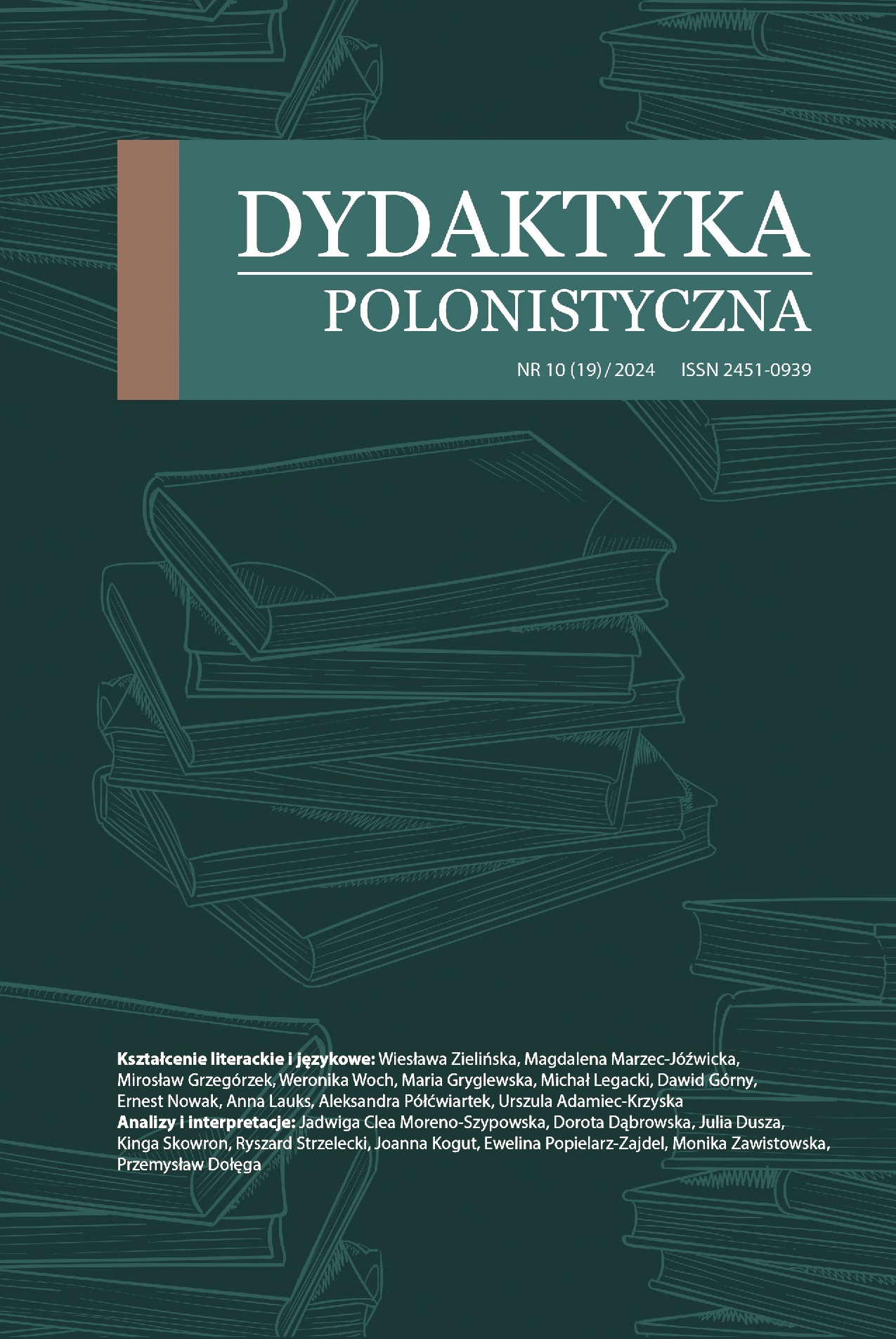The dark images of power in the creations of heavy metal group Hunter and its leader Paweł Grzegorczyk
DOI:
https://doi.org/10.15584/dyd.pol.19.2024.20Keywords:
Hunter, Paweł Grzegorczyk, Requiem, Live, Medeis, T.E.L.I…, HellWood, Królestwo, Imperium, Niewolność, Arachne, power theme, heavy metal, contemporary poetryAbstract
The aim of this article is to organize and problematize the topic of power present in the work of the heavy metal band Hunter and its leader Paweł Grzegorczyk. A detailed description of the figure of the despot will be particularly important in the intended concept of the work. The most representative songs from the albums: Requiem, Live, Medeis, T.E.L.I…, HellWood, Królestwo, Imperium, Niewolność and Arachne will be analyzed. The text of the argument will include references to the terminology used by cultural research methodologists, as well as to motifs appearing in the texts of other bands considered to be the ideological successors of Black Sabbath.
Downloads
Published
2024-12-20
How to Cite
Dołęga, P. (2024). The dark images of power in the creations of heavy metal group Hunter and its leader Paweł Grzegorczyk. Dydaktyka Polonistyczna, 19(10), 239–254. https://doi.org/10.15584/dyd.pol.19.2024.20
Issue
Section
ANALYSES AND INTERPRETATIONS


